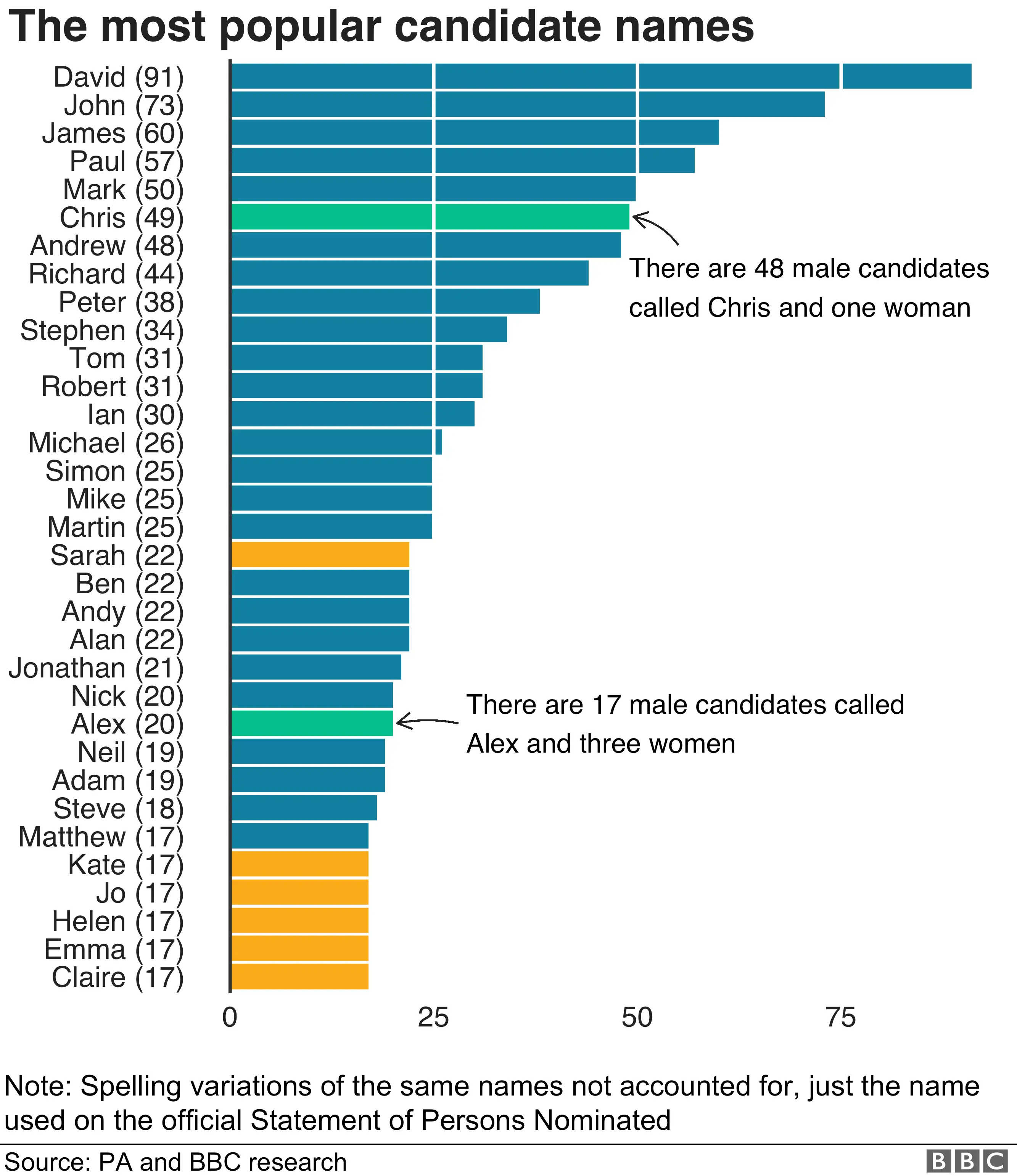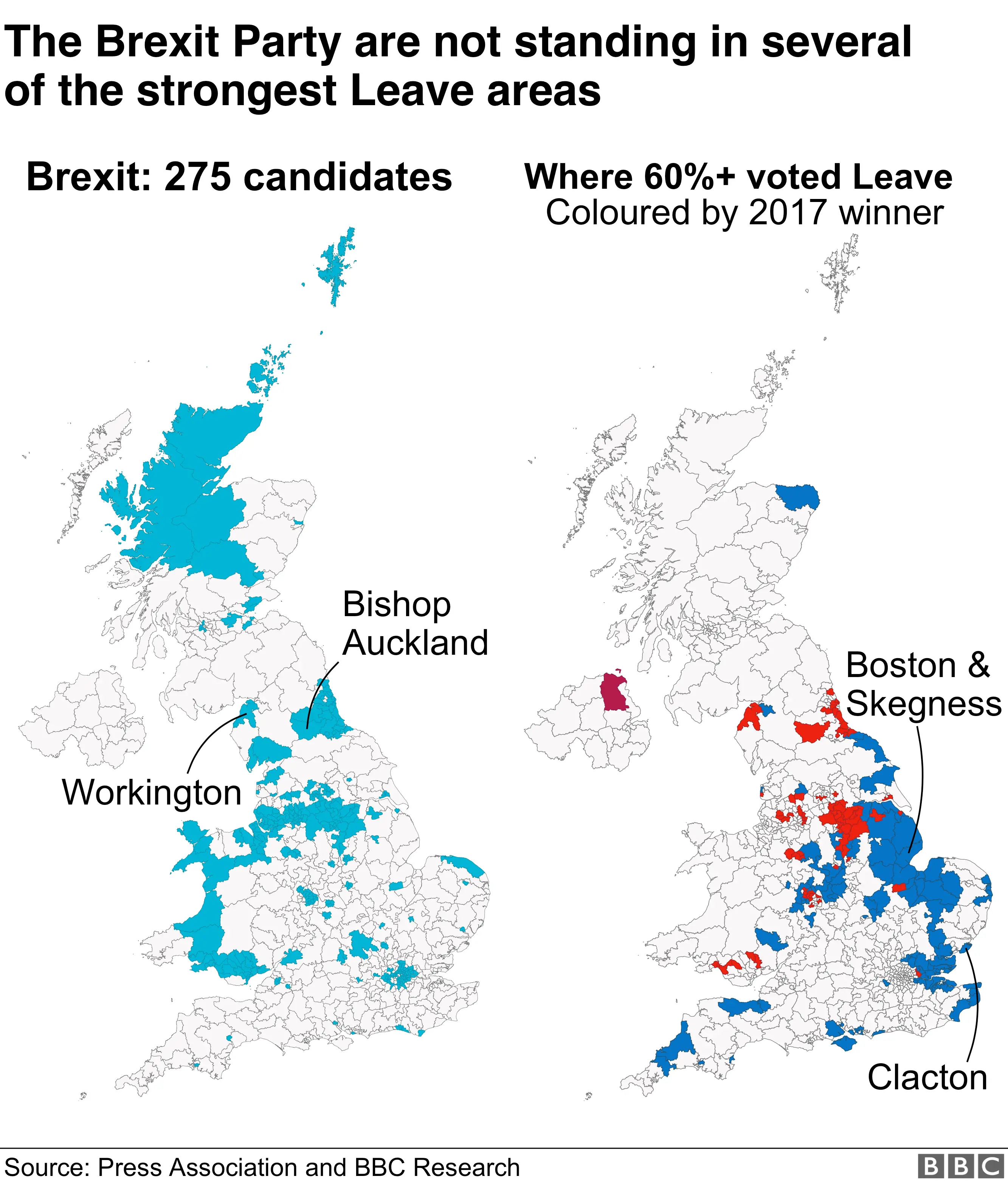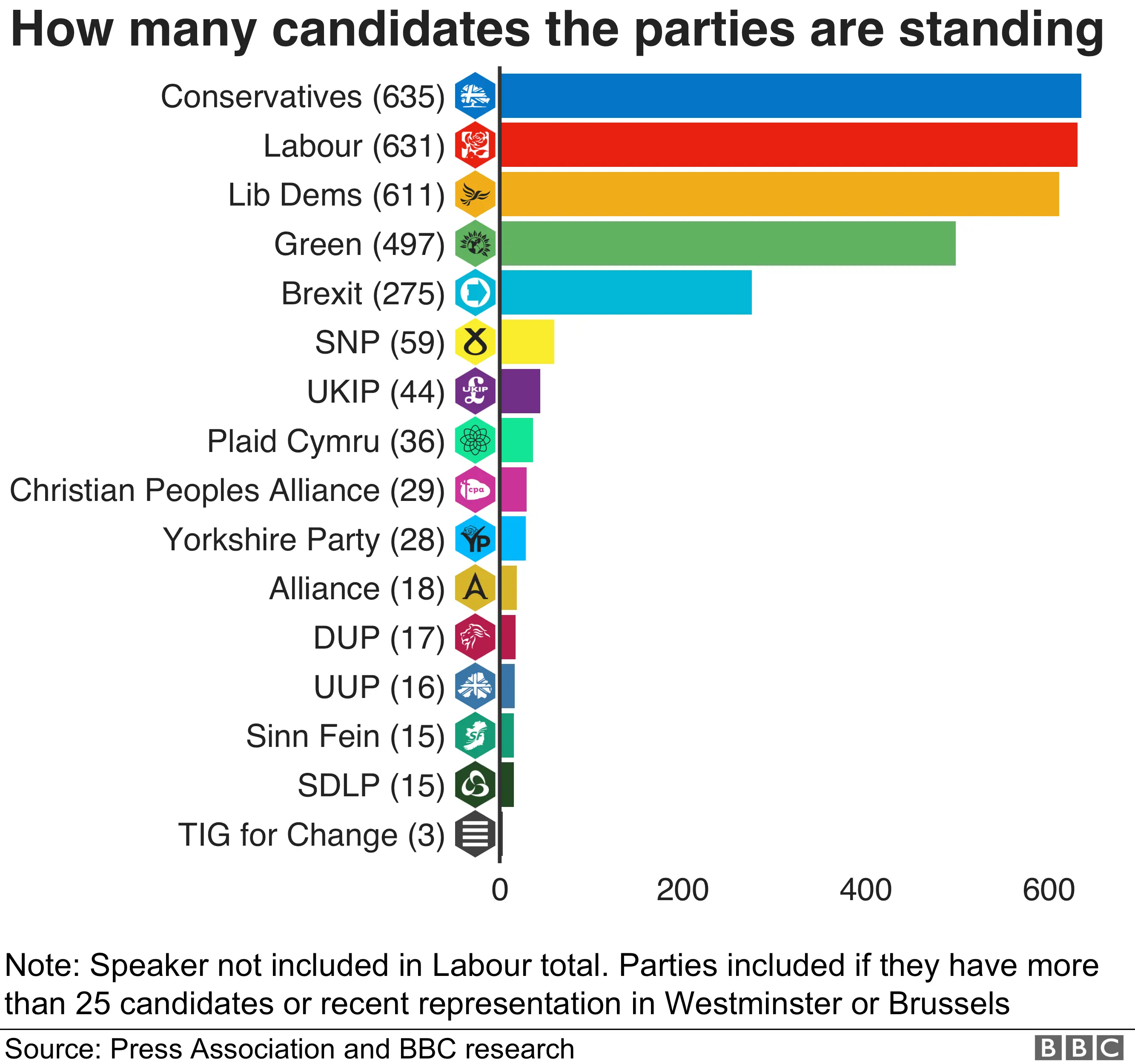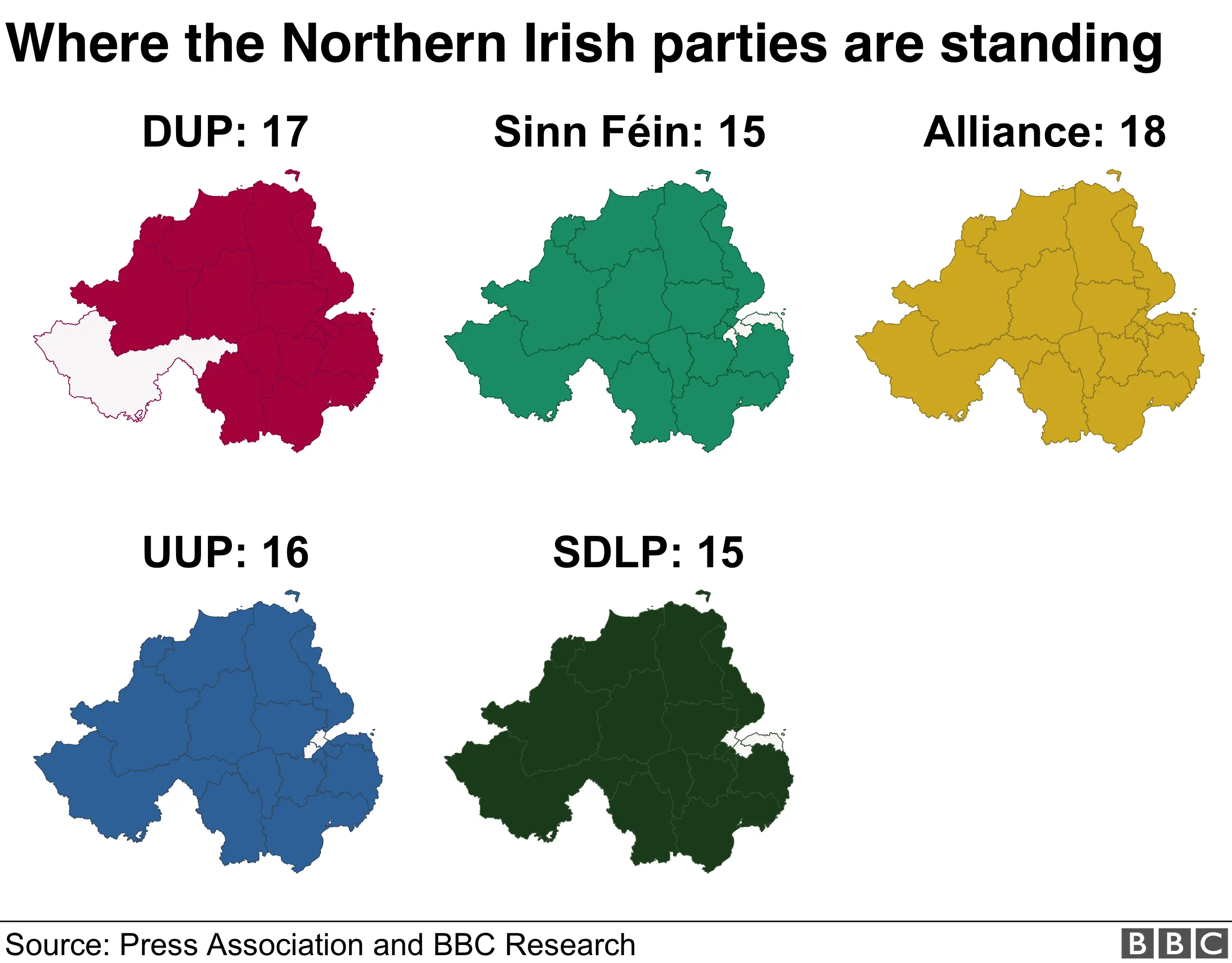General election 2019: Who's standing where?
 BBC, HoC, Getty, PA
BBC, HoC, Getty, PAThere are 91 Davids standing for election this year, ahead of John and James as the most popular name for wannabe MPs.
You have to go as far as number 18 on the list before you find a female name - there are 22 Sarahs.

Although there are a record number of female candidates this year, it is still just a third of the total.
The fact that female names are so low on our list isn't just because of gender imbalance, though. Women's names are more diverse than men's in general, so are less likely to be grouped together.

- CONFUSED?: Our simple election guide
- POLICY GUIDE: Who should I vote for?
- POLLS: How are the parties doing?
- A TO Z: Our tool to explain election words
- REGISTER: What you need to do to vote

Jones and Smith are the most popular surnames, 31 and 30 respectively.
There are 17 Johnsons, although for the first time this decade none of them are directly related to the prime minister.
Boris Johnson brother Jo was elected in Orpington in 2010 but stood down earlier this year.
Where are the parties standing candidates?
The two biggest Westminster parties, Labour and the Conservatives, have the best coverage in terms of candidates, although neither has a representative in every constituency.
Both are staying away from Chorley, held by new Commons Speaker Lindsay Hoyle.
And the Conservatives - the full name of which is the Conservative and Unionist Party - are contesting a handful of seats in Northern Ireland where Labour are not.

It's a tradition that the main parties allow the Speaker to be re-elected unopposed, as he's supposed to be impartial.
Sir Lindsay's two opponents in Chorley are the Green Party's James Melling and an independent called Mark Brexit-Smith.
The latter was going to be the Brexit Party candidate before he was stood down by the national party. He changed his name to get round electoral rules that limit descriptions of independents on ballot papers.
Brexit Party tactics
Nigel Farage has controversially withdrawn his candidates from the 317 seats the Conservatives won in the 2017 election.
Unfortunately for them, that leaves the party unable to compete for a lot of the areas with the highest amount of 2016 Leave voters, like Clacton and Boston & Skegness along the east coast of England.
They hope to be most effective in Leave-voting Labour-marginals in northern England, like Workington and Bishop Auckland.

There are some seats won by other parties in 2017 where the Brexit Party isn't standing - typically Remain areas.
A lot of those are in Scotland, like Lib Dem leader Jo Swinson's Dunbartonshire East seat. Labour/Tory marginal Canterbury, in south-east England, is another.
Remain alliance
On the other side of the Brexit divide, a pact between the Lib Dems, the Green Party and Plaid Cymru - the Welsh national party - has meant many of their candidates have stood aside in areas where one of the others is more likely to win.
The Isle of Wight and Brighton Pavilion are two English seats where the Greens will have no Liberal Democrat opposition, as well as Vale of Glamorgan in south Wales.
The Lib Dems have been allowed a free run to try to repeat their by-election success in Brecon & Radnorshire, as well as Tory-held Winchester, where three in five voters backed remain in the 2016 referendum.

Plaid Cymru have been allowed to target a few northern Welsh seats where they are particularly strong, including Ynys Mon, which is currently held by Labour.
There are still some seats where all three are standing, like Ceredigion on the Welsh coast and a few Labour-held constituencies in south Wales.

The BBC Question Time Leaders Special

- FULL PROGRAMME: Catch-up on iPlayer
- FACT-CHECKED AND ANALYSED: On our website live page
- HIGHLIGHTS: The best bits, in three minutes


The SNP has stood candidates in all 59 seats in Scotland. It performed incredibly well in 2015, winning all but three - one each for Labour, the Conservatives and the Lib Dems.
They were down to 35 in 2017 but hope that the unpopularity in Scotland of the Labour and Conservative Westminster leaders will allow them to win back some of those seats.
Other parties
UKIP has substantially fewer candidates this year compared to both 2017 and its high point in the 2015 election.
After standing almost everywhere in 2015 and securing 12.6% of the vote (although just one seat), UKIP has scaled down its ambitions.

The Independent Group for Change has put up three candidates: leader Anna Soubry, Chris Leslie and Mike Gapes.
They are defending seats won in 2017, but they were won as Conservative and Labour candidates.
The Yorkshire Party is standing in 28 seats on a platform of devolved power for Yorkshire and the Christian Peoples Alliance has 29 candidates.

No other party has more than 25 candidates, although the Monster Raving Loony Party is closest with 24, including Boris Johnson's opponent Lord Buckethead, Jeremy Corbyn's rival Nick The Incredible Flying Brick and leader "Howling Laud" Hope in Hampshire North East.
Northern Ireland
There are also interesting electoral pacts in Northern Irish politics.
The Alliance Party, the biggest liberal centrist party in Northern Ireland, is only party to be contesting every seat in the country.
Alliance performed well at the European elections in May, coming third behind the Democratic Unionist Party (DUP) and Sinn Fein and winning their first ever MEP in the process.
Sinn Féin, the biggest republican party in Northern Ireland, has stood down from three seats it would usually contest - Belfast East, Belfast South and North Down - to make way for its fellow remain-supporting parties, Alliance and the Social Democratic and Labour Party (SDLP).

The DUP, whose 10 seats won in 2017 allowed it to form a "confidence and supply" arrangement to prop up Theresa May's Conservative government, has stood down for a fellow unionist party, the Ulster Unionist Party (UUP), in Fermanagh & South Tyrone.
The UUP has repaid the courtesy in Belfast West and Belfast North - the seat of DUP Westminster leader Nigel Dodds.
